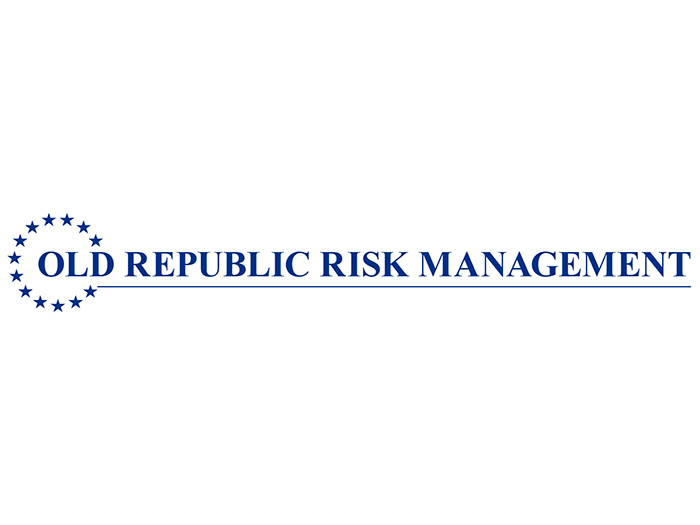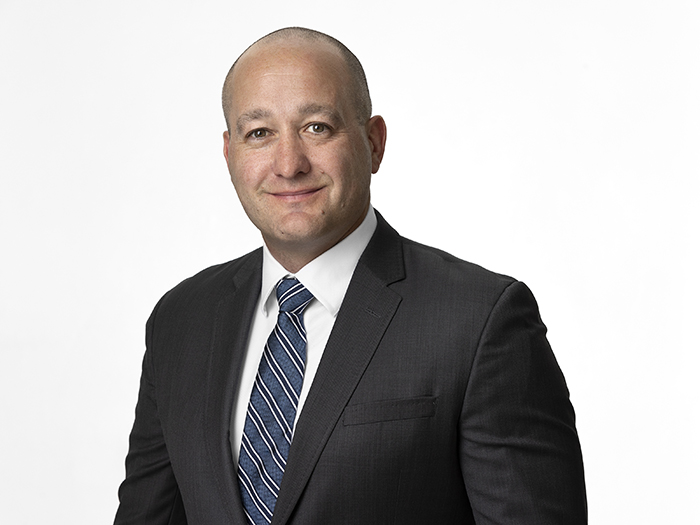Travelers’ Execs Discuss 2025 Captives Trends

A team of executives from Travelers recently spoke to Risk & Insurance as part of our expanded coverage of our 2025 Captives Power Broker® winners and finalists. On the call with Risk & Insurance editor in chief Dan Reynolds were David Raymond, vice president, specialty group captives; Wayne Robertson, head of property captives, excess property; and Ray Parenti, national practice lead, excess casualty.
Risk & Insurance: Thanks, everyone, for your time today. Dave, let’s start with you. What is your role at Travelers and how do you serve as a subject matter expert for captive programs throughout the company?
Dave Raymond: I lead the group captive practice at Travelers and serve as a subject matter expert for captive programs across the entire enterprise. My expertise is often sought out by colleagues who don’t work with captives on a daily basis but have clients with captive needs in their specific areas of the business, including international and property divisions.
In these situations, I help them understand the intricacies of captives and how we approach them at Travelers. This allows me to provide valuable insights and guidance to support their clients’ unique requirements, ensuring they receive the best possible captive solutions.
R&I: Ray, what is the role of Travelers’ excess casualty group in supporting captive members?
Ray Parenti: The excess casualty group at Travelers does not specifically write captive business per se. Instead, we write excess programs or excess policies in support of captive members to provide them with coverage to address their potential exposure to severe liability losses.
I have been with Travelers for about 25 years now. We are living through a really interesting time in the world of excess casualty.
R&I: Wayne, what changes have you observed in the captive insurance market over the past few years, particularly in terms of property coverage?
Wayne Robertson: We’ve seen a significant increase in captive business over the last couple of years. Many existing captives are looking to expand their property coverage within their captive programs.
This trend has been particularly noticeable in the past two years. Captive owners and participants are recognizing the potential benefits of including property risks in their captives and are exploring opportunities to do so.
R&I: What trends are driving captive expansion across P&C commercial insurance?

Wayne Robertson, head of property captives, excess property, Travelers
DR: The expansion of captives today is driven by several factors, rather than being solely a response to a hardening market. Firstly, captives appeal to companies that excel in managing their own risks, as they directly benefit from favorable loss experience. Within a group context, multiple insureds with strong risk management practices find greater stability and lower volatility in both losses and pricing.
Secondly, there has been a significant expansion of knowledge among agents, brokers and clients. Associations, regulatory bodies and companies have played a key role in developing and distributing resources to expand awareness. This growth in education is transforming the captive product from an alternative risk solution to a viable option for businesses.
Lastly, hardening market conditions are driving companies to explore less traditional captive lines of business, such as property and excess liability. The combination of these three factors – captives being built for strong risk management, increased knowledge among stakeholders and hardening markets in certain lines – is driving the continued expansion of captives.
R&I: Should we stop using the term “alternate risk transfer” and erase that language? Would that be helpful?
DR: Yes, I agree. The use of captives is more mainstream today than ever.
R&I: What trends are driving captive formation in the property market?

Ray Parenti, national practice lead, excess casualty, Travelers
WR: The property market has been very hard in recent years, leading many companies, especially in the real estate sector, to expand their captives to include property coverage alongside liability lines. Real estate firms often deal with significant asset values and complex risk exposures, including natural disasters such as wildfires, hurricanes and severe convective storms.
By utilizing property captives, these companies can more effectively manage and insure their high-value portfolios. This approach provides cost efficiencies through customized coverage options and enhances risk management strategies by allowing real estate firms to directly influence their loss prevention and mitigation efforts.
We see many of these accounts with very good loss histories and a strong commitment to risk control, making them better than average in the captive segment on the property side.
R&I: What are the key market factors within excess casualty that are leading to increased captive formation?
RP: The decision to join captives is not necessarily driven by specific excess casualty market factors. Instead, members are attracted to captives because they provide the ability to pool similar risks together in the primary lines, making their loss experience more predictable.
Captives can help members control costs and achieve long-term predictability of coverage, which are often the primary motivations for joining. Captive members tend to be more involved in risk control measures and quality control, with the ultimate goal of managing costs effectively over the long term.
R&I: What are the key benefits of captives for clients with strong risk management practices?
DR: Captives are a loss responsive mechanism, benefiting clients with strong risk management and control over their exposures. Stronger controls can lead to lower losses, and clients can achieve cost savings in the years they’re taking risk.

David Raymond, vice president, specialty group captives, Travelers
Moreover, managing losses on a go-forward basis makes their risk more predictable. This predictability helps not only in hindsight but also in looking ahead.
Another advantage is the flexibility in coverage. Insurance carriers fronting the captive recognize that the client has chosen to take on a certain level of risk. As a result, they might offer additional coverages that are more flexible than what’s available in the standard market.
By having a loss responsive option through a captive, clients strengthen their risk management practices and behaviors. They also receive benefits from lowering their total cost of risk.
R&I: How does the process of providing excess coverage differ when working with a group captive compared to a primary layer of risk?
RP: At Travelers, we evaluate each risk individually, even when it’s written in a captive. However, when insureds join captives, we often find that they tend to be more focused on best practices, particularly in terms of loss control and risk mitigation. This allows us to have more flexibility in our underwriting approach.
Another advantage of working with captives is the consistency in the underlying coverage. There is typically less variance in the underlying coverages and placement, which simplifies the process.
Ultimately, our goal is to work with our customers and provide each individual member the coverage they want to address their risk exposure and ensure their financial stability.
R&I: What are the challenges in creating group captive programs for property insurance, and how do factors like risk commitment, loss history and location impact their feasibility?
WR: Creating group captive programs in the property sector is more challenging compared to a traditional insurance transaction. For a property group captive to work, all participants must have the same level of commitment to risk management.
Additionally, the risk profiles and loss histories of the companies involved need to be aligned. The geographical locations of the insured properties also play a significant role, as different states have varying risk factors that can impact the viability of a group captive.
R&I: How does the frequency and nature of losses differ between the casualty and property sides of the business, and how does this impact the use of reinsurance?
DR: The casualty side of the business generally experiences a greater frequency of losses compared to the property side, making it easier to predict losses at lower layers. This allows for more effective use of reinsurance on the casualty side.
On the property side, losses tend to be vertical in nature. Sharing exposure through reinsurance becomes more challenging due to the verticality of these losses.
This difference in loss patterns is likely why there is more single parent activity observed on the property side.
R&I: What trends are you observing in the captive insurance market, particularly on the property side?
WR: We’re seeing more activity on the single parent captive side. Many companies already have their captives set up and are ready to commit to the property side. These companies typically have a good loss history, robust risk control measures in place, and believe their properties are better than average.
Making the commitment to go this route is the first step. We’re seeing more of this lately, and it’s the direction we’re pursuing at this point, primarily with single parent captives.
R&I: What is the role of the broker in captive formation or captive management?
DR: The broker plays an instrumental role in the captive formation process, guiding the client through the complexities of starting, creating or participating in a captive. The best brokers will detail what the client should expect and the risks involved, especially considering the long-term nature of a captive.
Most casualty claims have very long tails, and clients putting that risk in a captive need to understand the long-term commitment. This leads to a more informed client, particularly if they have only been a traditional insurance buyer in the past. The education provided by the broker in this context is invaluable.
R&I: What are the benefits for clients and brokers who use captives as a loss responsive product?
DR: Captives, as a loss responsive product, can promote greater risk management within the client. The client in a captive tends to think more holistically about their risk management.
This can lead to strong client retention for the brokers. By helping clients navigate the complexities of captives and promoting a culture of proactive risk management, brokers can not only add significant value but also reinforce their role as trusted advisors in the insurance landscape.
R&I: What is the role of the broker in determining whether a captive insurance program is a good fit for a client?
RP: Brokers are instrumental in helping guide clients through the complexities of participating in a captive insurance program based on their specific needs and circumstances.
Interestingly, the captive book that we typically write tends to be more prevalent in the upper tier middle market space rather than in the jumbo, Fortune 1000 accounts. It’s more common among companies that have the capacity to assume some risk and manage it effectively.
WR: Brokers are striving to offer their clients a wide array of viable alternative risk solutions in an effort to cater to the unique needs and preferences of each client.
The goal is to provide a comprehensive set of risk management strategies. This allows clients to select the solution that best aligns with their specific risk profile and financial objectives.
Ultimately, brokers seek to add value by offering tailored, innovative solutions. These alternatives empower clients to effectively manage their risks in a manner that suits their individual circumstances.
DR: A broker’s ability to represent both sides of an insurance transaction significantly enhances their role as a trusted adviser. By understanding the perspectives of both the insurer and the insured, the broker can provide holistic advice tailored to their client’s specific needs.
For instance, when considering a captive insurance arrangement, a knowledgeable broker can objectively assess whether it’s a suitable solution for their client. They can clearly articulate the reasons for or against such a setup, demonstrating a comprehensive understanding of the client’s risk profile and business objectives.
This balanced approach solidifies the broker’s position as a reliable partner in navigating the complex insurance landscape. It showcases their commitment to providing well-rounded guidance that truly serves the best interests of their clients.
Brokers should be very well educated about the capabilities of captives. It’s crucial for them to have a deep understanding of how captives function and the value they can provide to their clients.
Captives offer a unique set of benefits and solutions that traditional insurance may not. By being knowledgeable about these capabilities, brokers can better serve their clients and help them make informed decisions about their risk management strategies.
Furthermore, a well-informed broker can effectively communicate the advantages of captives to their clients. They can explain how captives can be tailored to meet specific needs, provide greater control over risk management and potentially offer cost savings. This level of expertise is invaluable in guiding clients toward the best solutions for their unique situations.
R&I: How is the growing awareness and education about captives, as well as their use for different risks, impacting the way Travelers builds products and approaches the captive insurance space?
DR: Travelers supports the captive marketplace broadly, striving to provide the most comprehensive solutions across all our lines of business, including casualty, property and excess over captives. Our goal is to ensure that clients have access to solutions that address their unique risk profiles.
In addition to this, Travelers launched its own construction captive in 2024. This move was in response to the broad need for additional risk management in the construction space. Our construction captive aims to provide more stability and predictability in insurance costs, helping construction companies manage their risk exposure more effectively while benefiting from Travelers’ deep industry expertise and resources.
The launch of our construction captive is a testament to Travelers’ proactive approach in addressing industry needs. We continuously assess the market and develop tailored solutions to meet the evolving requirements of our clients.
R&I: How is Travelers modifying or evolving its products to suit captives in the property insurance market?
WR: Travelers is a solution-oriented company. Property captives are a growing part of our overall portfolio, reflecting our long-term dedication and strategic investment in this marketplace.
We offer customizable collateral coverage options and programs designed to fit the specific risk profiles of property captives. This level of customization helps ensure that each captive can address its unique risk profile with precision, providing comprehensive protection that aligns with the needs of the insured.
By helping clients achieve greater financial efficiency and enhance risk management, we make captives a more attractive and viable solution for property owners and managers. Our goal is to be out there providing as many solutions as possible to meet the diverse needs of our clients in the property captive market.
R&I: What is your perspective on the future growth and expansion of captive insurance, particularly across different lines of coverage?
DR: Captives can help companies improve safety, stability and overall performance. As more organizations recognize these benefits, we expect to see continued growth across all lines of coverage. Looking back at the evolution of captives, they initially emerged in the 1960s as a response to hard market conditions.
In the mid-1990s to early 2000s, we witnessed an expansion into group captives. Today, there are over 70 group captives in the marketplace. This kind of expansion and knowledge transfer will drive companies with strong risk management practices to explore how they can utilize captives in innovative ways. &










